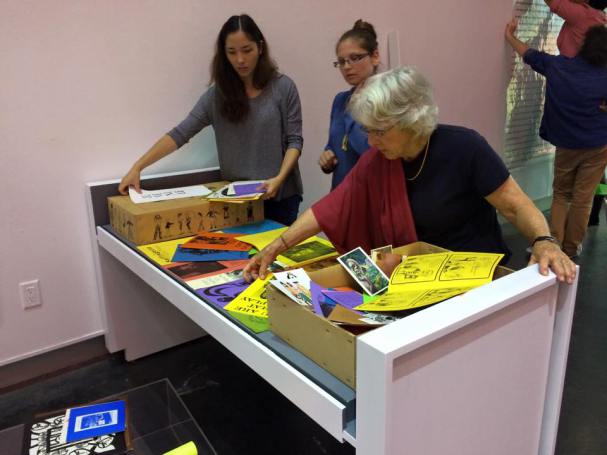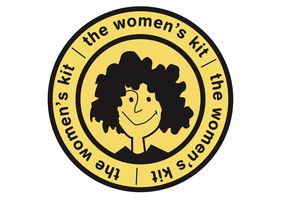|
THE WOMEN’S KIT (1974)
The Women’s Kit is a 23” × 14” × 5” cardboard box full of materials (pamphlets, records, posters, postcards, newspaper reprints, biographies, short stories, poems, drawings, plays, filmstrips, photographs, slides, historical documents, collages, etc.) that are all directly or indirectly about women’s histories, achievements, oppression and socialization. There are roughly 150 items in the kit, which were collected and produced between 1972-1973. Two hundred test packages were distributed to Ontario high schools and colleges. After the Ontario Institute for Studies in Education (OISE) published the Women’s Kit in 1974, a thousand copies were produced and sold at $50 per unit. The Women’s Kit was part of a series of educational, free-form, multi-media packages produced at OISE to give high school and post-secondary students the freedom to explore and interpret without the mediation of an enforced structure. The 30s Kit, The Perception Bag and The Ecology Box, the brainchildren of OISE researchers Anthony Barton and David Stansfield, were broad in their approach, experimental and often controversial. The Women’s Kit was more focused, but just as inspiring. The idea was proposed to OISE in the spring of 1972 by Pamela Harris, a feminist photographer and former teacher who had worked with Barton and Stansfield on the previous kits. At the time, there were very few Canadian materials on women’s issues, and the act of putting women’s perspectives front and center was innovative. OISE supported the Women’s Kit with funds that covered production costs and a researcher’s salary. Harris worked alone for the first six months, developing ideas, writing, evolving the kit’s framework and reaching out to the community of women around her. Two other OISE workers, Becky Kane and Donna James Pothaar, later joined the project, and Harris eventually hired an illustrator, Claire Watson Garcia, using grant money from The Federation of Women’s Teachers’ Association of Ontario. The historical value of the kit lies in its documentation of feminism in 1970s Ontario. It testifies to the collective effort of the women involved in education that made the project possible. The contents of the box served as one of the few educational materials that introduced the idea of feminism to students. In a recent conversation (2017) Pamela Harris recollects: Many women contributed to the process, and mainly for no pay. Energies were given freely to the cause of getting women’s stories into schools. There was an excitement about the very idea that there could be such an educational package on women, as well as a commitment not to let this chance slip through our fingers. The energy of the kit and its materials is the power of the women’s movement at a time when it was young, fierce and fun. The makers of the kit wanted to enable students to see things in a new way, to inspire them to think outside the box and to walk out of the box when they wished. Though the Women’s Kit is no longer in circulation, its legacy lives on. Books and documents used in the kit became part of a resource library, which became the basis for the OISE Women’s Educational Resource Centre, a one-of-a-kind library run for many years by Frieda Forman, researcher and librarian. The Women’s Kit also sits before us now, connecting us to the past with its bounty of carefully crafted materials, and, in doing so, prompts us to reflect on the present. Although 40 years old and long out of print, many of the kit’s questions, issues and ideas are relevant, showing that there is still much work to be done. Logo designed by Christina White based on an illustration by Claire Watson Garcia |

